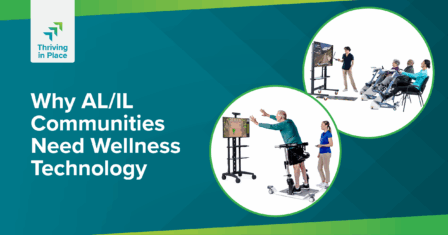2024 Skilled Nursing Facility Industry Outlook

The highlights:
- Technology, such as EHRs, telehealth, remote monitoring, AI, and data analytics, is increasingly important for improving operational efficiency and patient care.
- SNFs are facing challenges like workforce shortages and increasing patient acuity while occupancy rates are on the rise.
- The latest MDS changes may cause confusion.
For many in the skilled nursing facility (SNF) industry, 2023 was a year of recovery after the adversities brought by the COVID-19 pandemic. In 2024, the space stands at the intersection of innovation and unprecedented challenges as it works to continue to recover and stabilize. As we begin to settle into the new year, we are shedding light on key trends and strategies that will shape the SNF landscape in the coming year.
Challenges
Workforce Shortages
Workforce shortages remain top of mind for SNF operators heading into the new year. One new proposed rule that could compound this struggle is the minimum staffing mandate brought forth by the Centers for Medicare & Medicaid Services (CMS). The proposed rule would establish federal minimum staffing standards for long-term care (LTC) facilities and could impact at least 75% of facilities. Whether or not the proposed rule comes to fruition in 2024, SNFs must embrace staff retention initiatives, such as investing in technologies and career development, to strengthen their workforce.
Rising Patient Acuity
With an aging baby boomer population, SNFs are now dealing with a higher percentage of high-acuity and medically complex patients. This adds strain to a workforce already stretched thin and increases the risk of incidences, like falls, that could result in hospitalizations. To meet the needs of this patient population, SNFs will have to adapt, finding new ways to increase monitoring and ensure patients receive tailored attention for their unique healthcare needs.
Adapting to MDS Changes
The most significant Minimum Data Set (MDS) changes in the last decade took effect on October 1, 2023. One major change was the removal of Section G, which has been replaced with Section GG. Used to evaluate a resident’s self-care and mobility, Section GG is an interdisciplinary assessment that must be completed within the first 3-5 days of admission. The move away from Section G will impact reimbursement, quality reporting, regulatory compliance, and care planning. Accurate data collection will be imperative as operators work through this huge transition that has been less than smooth.
Opportunities
Technological Integration
SNFs are facing pressure to perform while operating against mounting obstacles. Technology provides a pathway to meeting these operational realities head-on. In 2024, we anticipate a focus on solutions that interconnect with a facility’s electronic health records (EHR) for streamlined and efficient patient data management. With fewer regulatory hurdles to overcome, telehealth and remote monitoring tools may become more prevalent, enabling healthcare providers to follow patients along the care continuum, and provide timely interventions. Artificial intelligence (AI) will also become more widely used and accepted, increasing efficiencies across various functions, from administrative work to clinical decision support.
Occupancy Recovery
After facing steep declines in occupancy during the pandemic, SNF occupancy rates are finally on the rise again. A recent study by Ziegler found that more than 80% of respondents reported seeing improvements in their skilled nursing occupancy compared to their low point during the pandemic. While occupancy rates have not yet returned to pre-pandemic levels, this positive trend is cause for optimism.
Data-Driven Decision Making
In 2024, healthcare providers will increasingly need to turn to data in decision-making. Leveraging data analytics strategically can help SNFs enhance operational efficiency, identify areas of improvement and gaps in care, facilitate evidence-based decision-making, support reimbursement, and ultimately improve patient outcomes.
Final Thoughts
The SNF industry stands at a critical juncture in 2024, balancing the challenges of workforce shortages, rising patient acuity, and the complexities of MDS changes with promising opportunities in technological integration, occupancy recovery, and data-driven decision-making. As SNFs navigate this evolving landscape, proactive measures, creative thinking, and strategic investments in tools and resources will be critical. The road ahead demands resilience, adaptability, and a commitment to leveraging innovation to improve patient care and operational health in the coming year.
Latest Updates
Subscribe to stay up-to-date on our latest posts.



